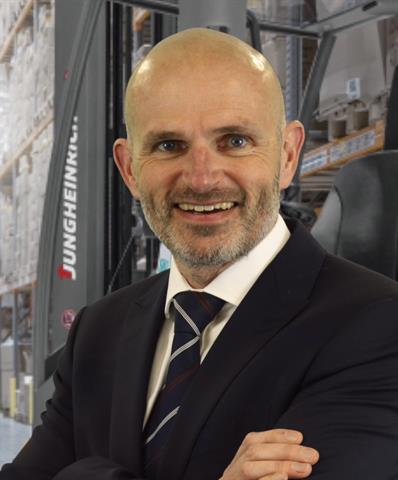 Jon Divers |
Jon Divers is customer service director at Jungheinrich UK.
Within two years, the majority of organisations plan to have automated at least 50% of supply chain operations, according to research conducted on behalf of Jungheinrich UK. But with companies focusing on semi- rather than fully automated intralogistics models, it is important to consider the role of the workforce in this new, collaborative environment.
The automated warehouseOrganisations within every industry continue to face growing pressure from an increase in customer expectations for a more flexible and faster service. As a result, more complex working environments within the warehouse and distribution centre are being created, with the need for a 24/7 operation.
Automation is firmly on the agenda and the key areas for development over the next two years are within order picking (25%), fulfilment (22%) and packing (32%). The workforce of the future will, therefore, require very different skillsets, and over the next two years, there will be a gradual increase in skilled staff - from 52.5% today to 56.5%.
With a number of manual tasks being handled automatically, automation is providing operators with the opportunity to focus on different aspects of their job, such as looking at ways to improve customer service, reviewing both the usage and charging cycles of trucks and their environmental impact, as well as safety within the warehouse. There will also be tasks which will become more complex - with, for example, an increasing focus on data scientists as companies look to explore the power of Artificial Intelligence and augmented reality to drive operational efficiency. As a result, businesses will need to consider new strategies for attracting, training and retaining this skilled workforce.
The role of the EngineerWithin the automated warehouse, forklifts are driving around on laser guidance systems, pallets are being moved from A to B on conveyors and elevators, and there are high-bay warehouses with stacker cranes going up and down aisles moving product. While automation requires minimal human interaction, the software and programming behind the systems used is considerable, and this is where engineers are very much needed.
Being an engineer in the logistics and materials handling industry is no longer completely about working with nuts, bolts and spanners. The image of being elbow-deep in grease is becoming an outdated one and the role has dramatically evolved into working with the latest innovations around improved efficiency, productivity and space optimisation. Lithium-ion technology is also leading the way in achieving faster charging times, zero maintenance and longer product life, creating a more flexible and environmentally friendly working environment.
One of the key benefits to training as an engineer in this industry is the longevity in the career choice. There will always be a need for the movement of goods - from a truck to a ship, to products being moved on a conveyor and put onto a pallet, to them being lifted out of a van and placed onto shelves.
Forklift safetyWith the working environment of warehouses and distribution centres becoming very different, how will man and machine work together safely? There may be fewer workers on the shop floor in a more automated environment, but companies need to think carefully about the new risks created when the workforce is operating alongside robots and AGVs.
The development of advanced forklift technologies, from sensors and remote controls to on-board cameras and collision protection, is ensuring that the safety of pedestrians is of the highest priority. Anything from floorspots that shine a light onto the warehouse floor through to anti-collision systems can be fitted to equipment to warn of their approach and avoid accidents.
New innovations in forklift technology are crucial in continuing to reduce risk. It's vital that organisations look at advancements in intralogistics technology, not only to help drive efficiencies and optimise their operations but also to utilise the technology to enhance safety for those workers on the frontline of all operations within the warehouse.
Technology, however, is not enough on its own, especially within a fast-changing warehousing model. Operator training is a crucial part of safety and engineers contribute significantly to this. It's the combination of people, processes, equipment and software that will successfully safeguard employees and create a collaborative warehouse.
ConclusionThe diverse role of the engineer will continue to be valuable, not only to materials handling and logistics vendors as they build extensive industry expertise, but to their customers' businesses as they help them work towards creating a smart and safe workforce. Once they are equipped with the right skillset, technology and safety features, organisations will be able to move their business forward and fully embrace the new, more efficient, productive and safer warehouse of the future.